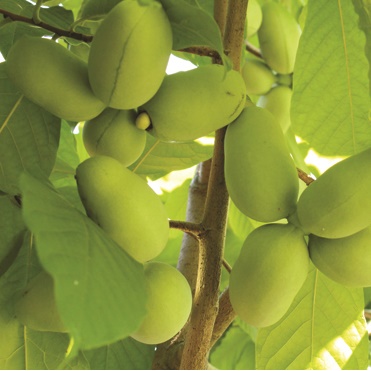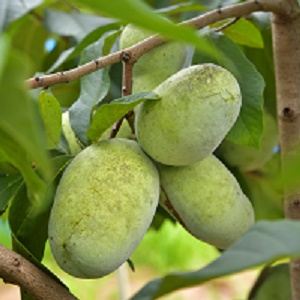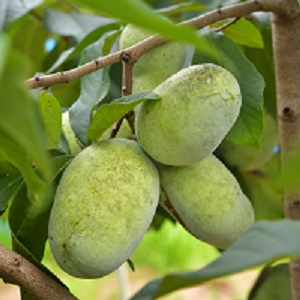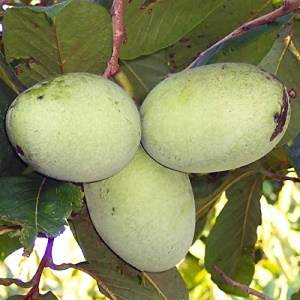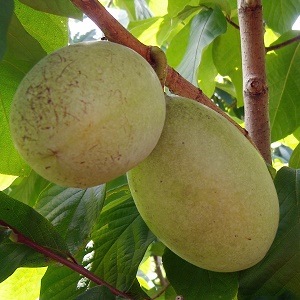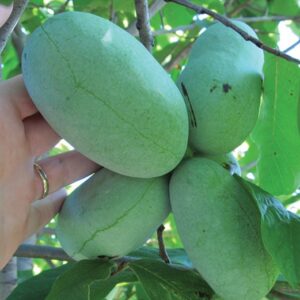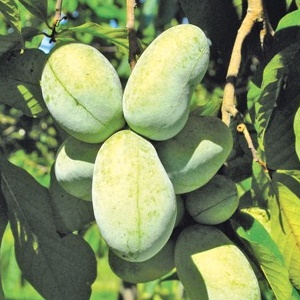Pawpaw : Seedling
$79.95
Native to Eastern North America, the pawpaw is a small tree that produces hanging clusters of delicious oval shaped fruit that have a banana or vanilla custard like flavour. With its large drooping leaves and delicate purple flowers in spring, the pawpaw tree has great ornamental appeal. Paw paws also have few pest or disease problems. Plant in well drained soil and protect from strong winds and grass competition for the first two years.
PICK UP ONLY
PLANT 2 FOR POLLINATION | ZONE 4/5 | HARVEST: OCT.
Other products in this zone
Growing Tips
In most cases, we recommend planting bareroot fruit trees at their permanent site as soon as you get them. However, the trees in this section of the catalogue (Pawpaws, Persimmons and Jujubes) will often benefit from spending a few more years in a pot. Since these species do not take as well to bareroot handling, we receive them as very small trees in pots. We suggest you repot them in a 2 or 3 gallon container and grow them for several seasons. Pawpaws in particular, will appreciate this, as the tender young trees will prosper much more if you can keep them out of direct sunlight. This way you also have the option of overwintering them in your garage until they are bigger and stronger.
See Page 80 for 3 gallon Root Trapper® Containers.
